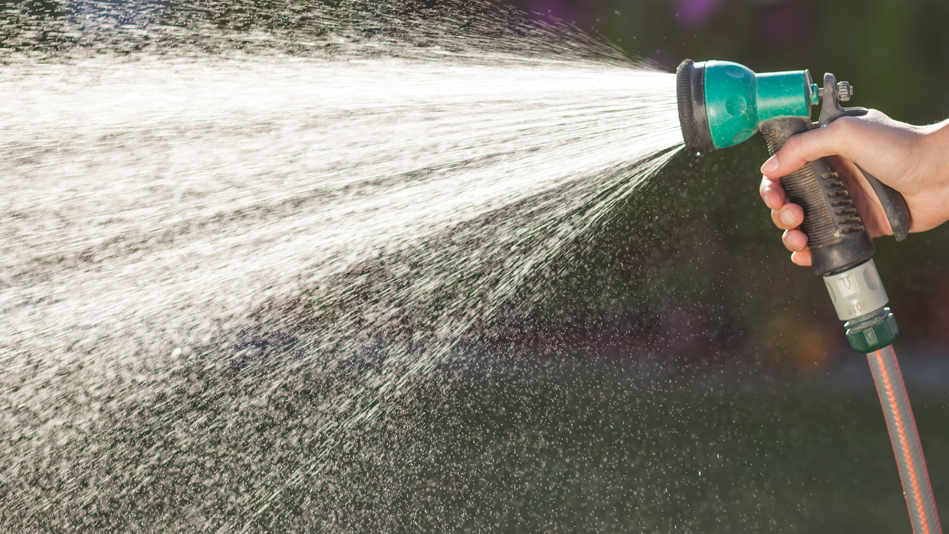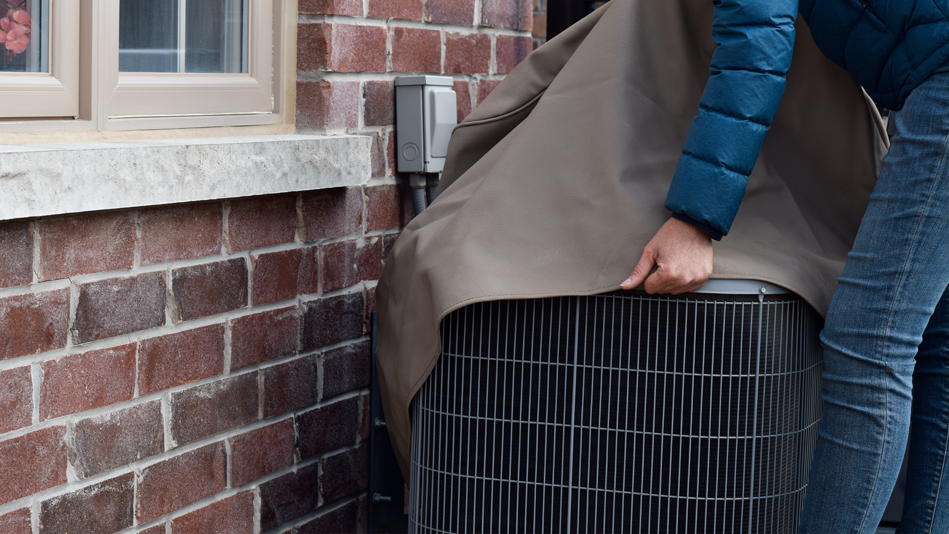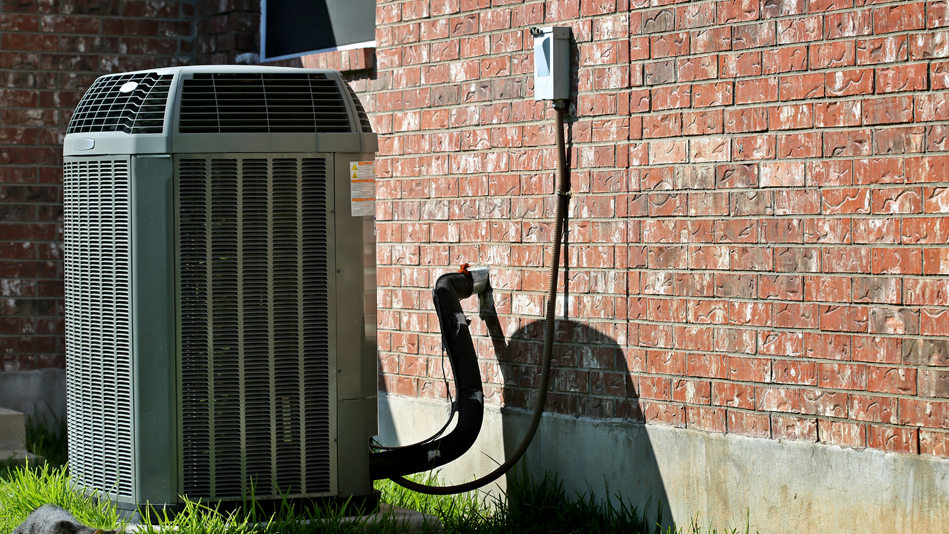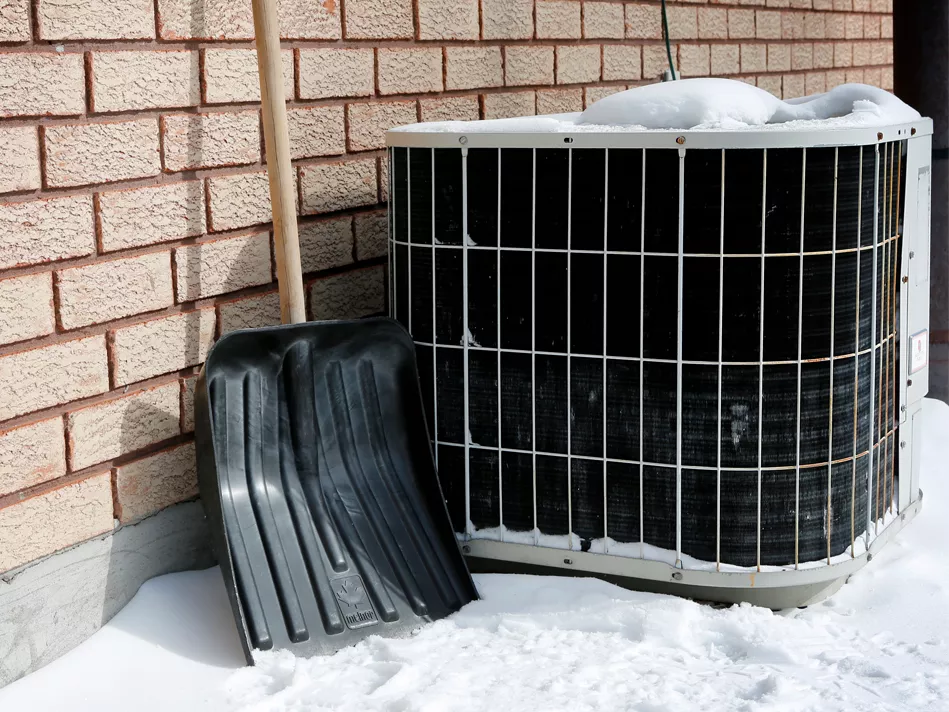Many homeowners only worry about their air conditioner in the summer, when temperatures are high and having cool, comfortable air is an absolute necessity. But if you want your air conditioner to last for years to come, be sure to add AC winterization to your Fall Maintenance Checklist.
Winterizing is a simple process that takes less than an hour and can save you from having to replace your air conditioner prematurely. So, before your area's temperatures drop or your home's covered in snow, take this opportunity to winterize your AC unit to keep it safe from winter's chill.
Why you should winterize your air conditioner
Taking a little time to prep your air conditioner for the cold season can prolong its life and boost its performance in the summer, when your air conditioner works the hardest. An inefficient air conditioner also costs more to operate, so by giving yours a little TLC now, you can save money down the road.
Here are just a few more reasons to winterize your AC unit every year:
- Prevent ice and debris buildup that can damage your unit
- Reduce the risk of flooding and water damage
- Eliminate the possibility of freezing pipes
- Improve airflow and circulation
- Ensure optimal performance when you need it most
- Get ahead of any potential repairs
Winterizing your AC unit is an important yearly task that helps protect your investment and ensure optimal performance when you need it most.
Winterizing your AC unit: A step-by-step guide
While it's important to winterize your AC unit in the fall, it may not be something you've done before. Read this step-by-step guide to help you get started:
1. Disconnect and drain the unit
First, you’ll need to disconnect the power to your air conditioner and drain any water that has collected inside the housing.
For this step, locate the main power switch and turn it off. Then, find the drain valve (usually located near the bottom of the unit) and open it to allow any water to drain out. Once the unit is completely drained, close the valve, and give the unit a chance to dry completely.

2. Clean your unit
Next, you want to clean your AC unit to remove any dirt, dust, or debris that may have accumulated over the summer. A clean air conditioner will run more efficiently and be less likely to break down over winter.
You can use a garden hose to spray off the unit, being careful not to bend or damage any of the fins in the process. You can also use a putty knife to gently remove any stubborn buildup.
3. Inspect and repair the unit
Now is a good time to inspect your air conditioner for any damage that may have occurred over the summer.
Check the fins for bends or breaks and look for any signs of corrosion. If you find any damage, it’s best to have it repaired by a professional before the winterization process (you'll be glad you did next summer when it's time to cool your home again).
4. Lubricate moving parts
Once your unit is dry and all damage has been repaired, it’s time to lubricate all the moving parts. This helps keep the unit running smoothly and reduces the risk of breakdowns in winter.
Use high-quality oil to lubricate all the moving parts, including the fans, motors, and pumps. Consult your owner's manual for specific instructions or reach out to a professional if you're uncomfortable with this part of the winterization process.

5. Cover the unit
Once your unit is clean, it’s time to cover it. This will protect it from snow, ice, and debris while also helping prevent corrosion.
You can purchase a pre-made cover at most home improvement stores, or you can make your own out of a tarp or heavy-duty plastic. Just be sure to secure the cover tightly so that it doesn’t blow away when winter weather arrives.
6. Store the unit properly
Once your AC unit is clean, covered, and lubricated, it’s time to store it until spring.
If you have a window unit, simply remove it from the window and store it in a cool, dry place. For central air conditioners, be sure to turn off the power and disconnect any hoses or pipes before covering the unit until next spring.
Things to avoid when winterizing your AC unit
While there are many things you can do to winterize your air conditioner, there are also a few things you should avoid. Here are a few tips:
- Don’t forget to disconnect the power. One of the most important steps in winterizing your AC unit is to disconnect the power. This helps prevent any accidental damage or injuries while you’re working on the unit.

- Don’t use compressed air to clean the unit. While it may seem like a good idea to blow out the dust and debris with compressed air, this can damage the fins on your AC unit. It’s best to stick with a garden hose or a putty knife to avoid any damage.
- Don’t leave the unit exposed to the elements. Once you’ve winterized your air conditioner, be sure to cover it up to protect it from snow, ice, and debris. A tarp or heavy-duty plastic sheet will do the trick.
- Don’t store the unit in a humid or damp location. If you’re storing a portable AC unit, be sure to choose a cool, dry location. This helps prevent corrosion and keeps the unit in good condition for next spring.
When to call a professional
If you’re not comfortable winterizing your AC unit yourself, or if you find any damage that needs to be repaired, it’s best to call a professional. Hiring a professional to winterize your AC unit can save you time and money in the long run.
A professional can properly inspect your air conditioner and repair any damage. They can also offer tips on how to keep your HVAC system running efficiently all winter long.
By following these simple steps, you can winterize your AC and keep it running smoothly for years to come, protecting your investment and ensuring optimal performance when you need it most.
Visit us on Facebook, LinkedIn, Twitter or Instagram to tell us your thoughts!

